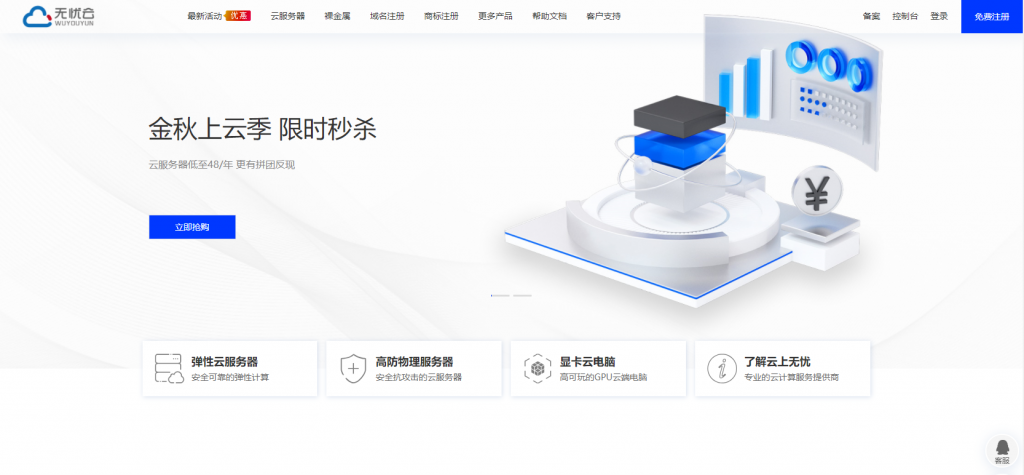anddoesn[小学]tcp-ip day4 国外大学课件
TCP/IP
ARP c ontinued,ARP c ache pois oning
ARP resolution–the details
First, we' ll look at the format of an ARP message (see text, or look it up ongoogle) .
The protocol has three aspects: it specifies what a requester is to do, what areceiver is to do, and what a responder is to do. A requester is a machine thatsends an ARP request, a receiver is a machine that receives any ARP message, anda responder is a machine that sends an ARP reply.
On our Ethernet network, here' s the process in detail; for a requester:
Create an ARP message:
1. Set HW type to ' 1' (for Ethernet)
2. Set Protocol type to 080016 (for IP)
3. Set HLEN to 6 (6x8=48 bits)
4. Set PLEN to 4 (4x8=32 bits)
5. Set OPERATION to 1 (for ARP request)
6. Fill in SENDER' s HW ADD
7. Fill in SENDER' s PROT ADD
8. Set TARGET HW ADD to 0 (doesn' t know)
9. Fill in TARGET PROT ADD.
Broadcast the ARP message in an Ethernet frame.
For a receiver (of either an ARP request or reply) or responder
Extract the ARP request
If the SENDER' s PROT address in in my cache, update it with the SENDER' s HWaddress and reset the timer on that pairing
If the TARGET PROT address is identical with my IP address, carry on, otherwise,quit
Update my cache (again) , regardless of wh'ether an entry exists for that PROTaddress. (all this is done even if it isn t a request)
[ [Here it would be possible for the arp request to contain a protocol addressidentical with the protocol address of the target. We noted that Windowsoperating systems detect this, and make a note on 'the console. I tested Linux,and i't simply ignores the arp request, i. e. , doesn t generate a reply, anddoesn t update its arp cache. ] ]
If the OPERATION is a request, carry on; otherwise quit.
Fill in TARGET HW address with my Ethernet address, swap SENDER and TARGETaddresses, and set OPERATION to 2
Encapsulate ARP reply in a frame addressed to TARGET HW address.
QUESTIONS
Why does the ARP request recipient try to update its cache twice before evenexamining whether the message is a request? And once before even examiningwhether it is the intended recipient ?
( ( 1st time: save on traffic ) )
( ( 2nd: save repeating the process in reverse ) )
Gratuitous ARP
One other application of ARP that I' ll mention briefly is gratuitous ARP. Some OSs employs ARP to make sure that there are not duplicate IP addresses onthe physical network. (In fact OpenBSD does this. )
It broadcasts an ARP looking for the HW address of itself, i.e. , of its IPaddress.
If it receives a reply, it knows there is another host with its IP address, andputs a message on the console.
ARP Cache Poisoning
- ARP is a protocol which generates mappings between IP addresses and hardwareaddresses
- The basic idea, you will recall, is as follows:
- |A|-------|B|
- Host A wants to talk to host B, but A doesn’ t know B’ s HW addr
- A sends an ARP request to B, containing a mapping between A’ s HW and IPaddr
- B caches this mapping, and returns a reply with its mapping
- Communication proceeds
- There are three aspects to ARP cache poisoning that I want to discuss: (1)
What is it? (2) How do you do it? (3) Why do it?
- (1) ARP cache poisoning is when one machi’ne on a network, s’ay C, causes afalse entry to be placed in another host s, for example C s, ARP cache.- (2) It is very easy to poison ARP caches, and operating systems have triedvarious methods to protect against it, the main one being the creation of an
incomplete entry in the arp cache, and updating according to the steps aboveonly if that incomplete entry exists; this will go some way to protectingagainst unsolicited arp replies. ‘ However’ , this creates a race condition,poisoning i‘s still possible’by spaming unsolicited arp replies, in thehopes of winning the race against legitimate, solicited arp replies.
(3) Poisoning Effects
ARP cache poisoning can be used in various ways, the three most fundamentalof which are:
- (a) Eavesdropping
- Now suppose that an attacker, host C, wants to eavesdrop on communicationbetween host A and host B, but that the LAN is switched Ethernet. (How doesswitched Ethernet work?)
- |A|--------|B|
- |
- |C|
- If’ C could convince A that B’ s HW addr is C’ s, and could convince B thatA s is also C, then all traffic from B to A, and vice versa, would go to C.- Moreover, if C turned on forwarding, and had the correct HW-IP mappings, Cwould in effect become a kind of router between A and B, and would
consequently have access to all communication between A and B.
- The effect of this attack would be the disclosure of potentially confidentialinformation.
- (b) Denial of service
- On the other hand, perhaps C is not interested in eavesdropping, but wouldrather deny A and B the ability to communicate with one another.
- In this case, it would suffice for C to poison A’ s and B’ s caches withmappings eit’her to non-existent hardware addresses, or alternately, again useits own – C s – HW address, and simply not forward (the former makes iteasier for the attacker to hide his/her tracks) .
- (c) Hijacking
- Another possibility is that C is not interested in eavesdropping or DoS, butrather, wants to take over one end of the conversation.
- This would be a kind of combination of the previous two attacks: First, Cwould need to eavesdrop using the method previously outlined.
- Then, after (e.g. ) authentication, C performs a DoS on A, and takes over A’ srole in this 2-way conversation.o (Another example, besides authentication, that A might wait until thetwo hosts are communicating, is in order to sample TCP sequence andacknowledgement numbers, which is necessary in order to successfullyhijack a TCP session. This will make more sense when we come to TCP. )- This is called session hijacking (normally TCP sessions) , and there arevariations on this theme. E.g. , C could maintain the connection between Aand B, yet insert data into the communication channel.
- ARP Poisoning: not just a LAN issue
- These attacks are not limited to hosts on a single LAN. In fact, provided wehave LAN access to anynetwork on the path between A and B, these attacks arepossible.
- Examples:
- C
- |------------
- | |
- A B
- Here we merely poison A and R1.
- C
- |------------R1-----Internet----
- | |
- A B
- Poison B and R2
- C
- |------------R1-----Internet-----R2----R3---------|
- | |
- A B
- Poison R2 and R3
- anddoesn[小学]tcp-ip day4 国外大学课件相关文档
- lecture[说明]tcp-ip_day2 国外大学课件
- 美国[攻略]国外ip地址
- 产权IP版权交易平台如何进行融资交易,国外有哪些模式值得借鉴
HostKvm 黑色星期五香港服务器终身六折 其余机房八折
HostKvm商家我们也不用多介绍,这个服务商来自国内某商家,旗下也有多个品牌的,每次看到推送信息都是几个服务商品牌一起推送的。当然商家还是比较稳定的,商家品牌比较多,这也是国内商家一贯的做法,这样广撒网。这次看到黑五优惠活动发布了,针对其主打的香港云服务器提供终身6折的优惠,其余机房服务器依然是8折,另还有充值50美元赠送5美元的优惠活动,有需要的可以看看。HostKvm是一个创建于2013年的...

提速啦(900元/月),杭州BGP E5-2665/89*2 32核 48G 100G防御
提速啦的来历提速啦是 网站 本着“良心 便宜 稳定”的初衷 为小白用户避免被坑提速啦的市场定位提速啦主要代理市场稳定速度的云服务器产品,避免新手购买云服务器的时候众多商家不知道如何选择,妮妮云就帮你选择好了产品,无需承担购买风险,不用担心出现被跑路 被诈骗的情况。提速啦的售后保证提速啦退款 通过于合作商的友好协商,云服务器提供3天内全额退款,超过3天不退款 物理机部分支持当天全额退款提速啦提现 充...

无忧云( 9.9元/首月),河南洛阳BGP 2核 2G,大连BGP线路 20G高防 ,
无忧云怎么样?无忧云服务器好不好?无忧云值不值得购买?无忧云,无忧云是一家成立于2017年的老牌商家旗下的服务器销售品牌,现由深圳市云上无忧网络科技有限公司运营,是正规持证IDC/ISP/IRCS商家,自营有国内雅安高防、洛阳BGP企业线路、香港CN2线路、国外服务器产品等,非常适合需要稳定的线路的用户,如游戏、企业建站业务需求和各种负载较高的项目,同时还有自营的高性能、高配置的BGP线路高防物理...

-
导致卡巴斯基支持ipad支持ipadipad连不上wifi苹果ipad突然连不上网了,是怎么回事?网络是好的,手机能上网。windows键是哪个Windows键是哪个键啊?tcpip上的netbios网络连接详细信息上的netbios over tcpip是什么意思?win7如何关闭445端口如何关闭445端口,禁用smb协议迅雷快鸟迅雷快鸟是做什么用的,,,csshack什么是Css Hack?ie6,7,8的hack分别是什么win7还原系统win7怎么初始化系统?系统还原?